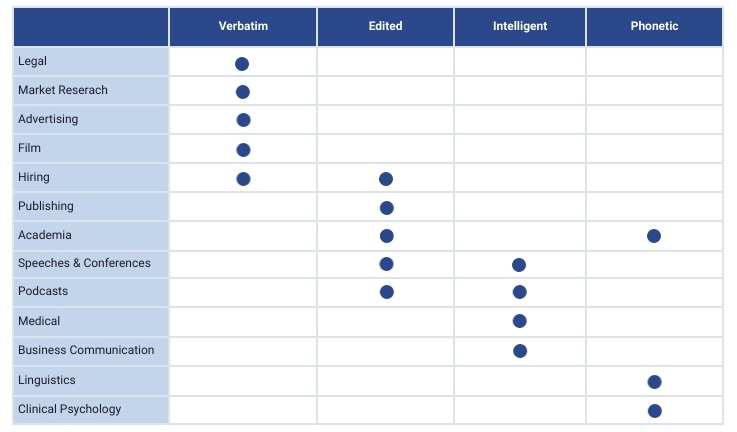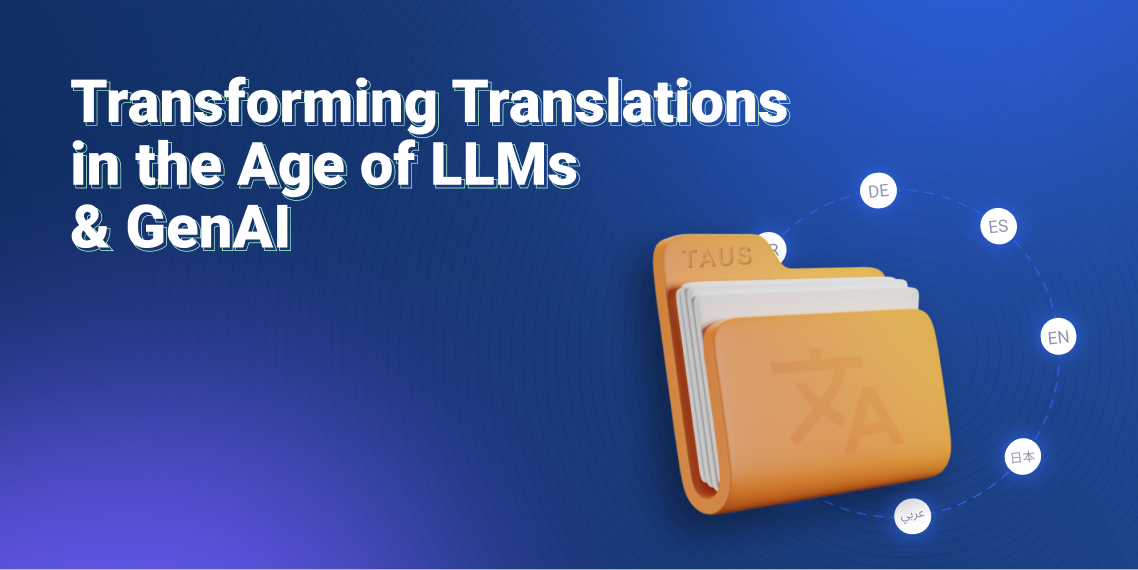Types of Audio Transcription and when to use them

It is crucial to choose the right audio transcription type between verbatim, edited, intelligent, and phonetic, to best suit your transcription project needs
Audio transcription is a service that has been seeing growing demand in recent years to help businesses communicate with their stakeholders. The rise in demand for transcription comes from the shift from written content to other types of multimedia such as video or audio - which are increasingly common in day-to-day business activities. However, written reports are still necessary for an easy conveyance of information.
Luckily for us, machine learning (ML) is expanding the accessibility and potential uses of audio transcription. But in order to make good use of audio transcription, we must first understand the available types, best practices, and what each type is most suitable for.
Types of Audio Transcription
- Verbatim Transcription
This type of transcription is the most detailed of the four. Otherwise known as ‘true verbatim’ or ‘strict verbatim’, it has the goal to capture all details as heard in the audio file. This results in longer transcriptions, including both words uttered by the main speaker(s) as well as any other non-verbal communication within the recording such as filler words, pauses, or general sounds like applause. - Edited Transcription
Edited transcription, also frequently called ‘clean verbatim’ is the most common, or default transcription style. Whilst attempting to preserve the meaning of a text without changing its meaning, edited transcription cuts out non-verbal cues or surrounding sounds which are not part of the main content. The ultimate aim of this type of transcription is to strike a balance between completeness and readability. - Intelligent Transcription
Intelligent transcription aims to turn speech into text in the most natural way possible. In many cases, this might imply the removal of certain parts of speech that may be repeated, and even the grammatical restructuring of sentences in order to make the text as clear and concise as possible — without affecting loss of meaning. - Phonetic Transcription
The last of the transcription types is phonetic transcription. This is the style that differs the most from the other three, as instead of capturing meaning, it aims to rather focus on the pronunciation of the words uttered by the speaker(s). Furthermore, phonetic transcription takes note of the speaker’s tone, pitch, and even how sounds overlap and interact within the audio. This kind of transcription makes use of the phonetic alphabet, a special notation system to effectively convey pronunciation.
Which one when?
Although seemingly straightforward, different industries have different transcription needs. It is therefore crucial for a transcriber to understand their client’s specific requirements, to then determine which transcription type will best meet their needs—edited, verbatim, intelligent verbatim, or phonetic.
For example, verbatim transcription, which produces highly-detailed transcripts can be very useful for legal documents, or film scripting. Edited transcription, on the other hand, is the most suitable transcription type for documents that need publishing, or texts covering speeches or conferences, given the high comprehensiveness of its output. Intelligent transcription, due to its conciseness, is best suited for general business documents which need to be quickly read, digested, and shared. Lastly, phonetic transcription is most typically used for linguistics-related projects, where, for example, highlighting the pronunciation of specific words might be of necessary value.
The table below gives you a clear overview of which transcription type is used when:

Now that you have more knowledge about transcription types and how they can best be used, you are ready to make a start on your own audio transcription project. However, choosing the correct type of audio transcription service is only the beginning of a detailed process. To achieve optimum results, you’ll need experienced and specific transcribers to perform the work for you. You can trust TAUS with that part. With our global workforce of data contributors, we can form special groups of transcribers who are best suited to your requirements, and perform the work on our HLP Platform.
Get in touch with us for more information on how we can help you with your transcription and speech data needs.

Pamela is the Marketing & Training Coordinator at TAUS. With her background as a Communication Science student, she aims to finds the best ways to engage users both on social media channels as well as occasional blog articles.



